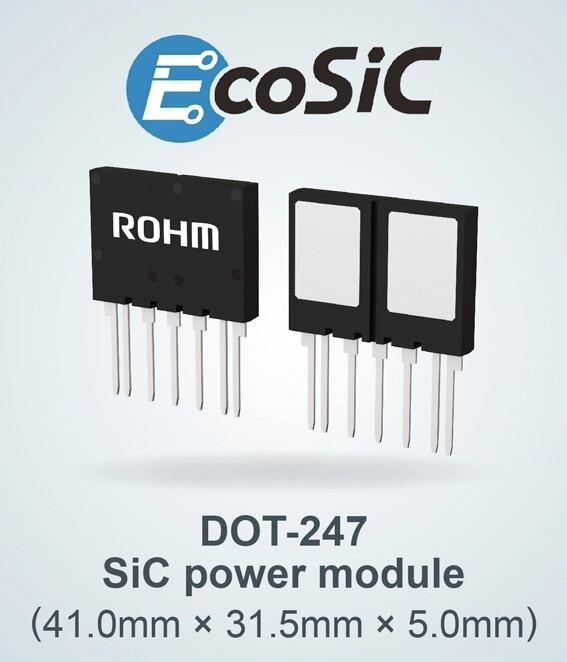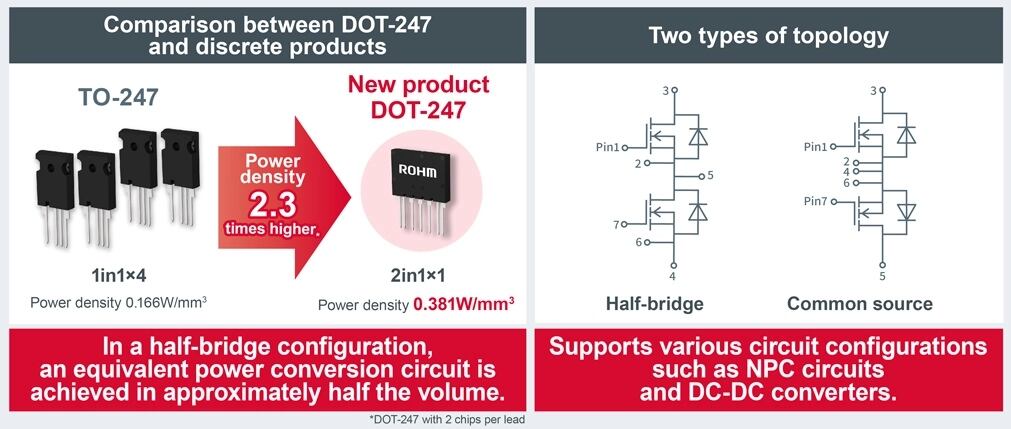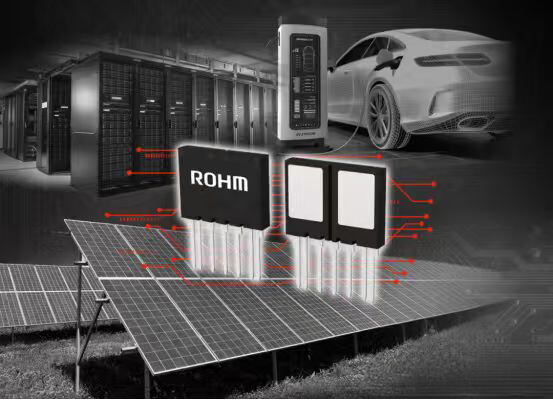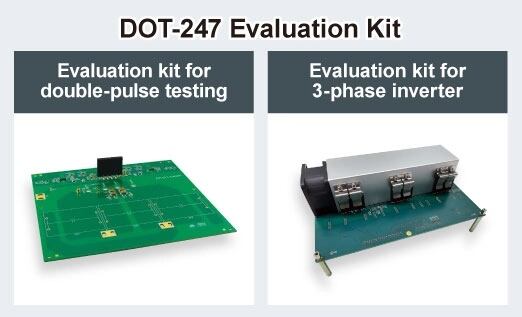ROHM Launches DOT-247 Package: Enhancing SiC Power Semiconductor Performance and Application Flexibility
The TO-247 package has been widely used in the power semiconductor field for decades, particularly in power supplies and industrial systems. However, as silicon carbide (SiC) devices become the core of high-efficiency power electronics, the traditional TO-247 package is reaching its limits in terms of chip size and system power density.
On September 16, ROHM officially launched the new DOT-247 package. This solution adopts a "2-in-1" design, combining two TO-247 devices into one unit to achieve higher power density and lower thermal resistance. According to official data, DOT-247 reduces thermal resistance by about 15% and cuts parasitic inductance in half. In a half-bridge topology, it delivers 2.3 times the power density of the traditional TO-247.

In terms of applications, the value of DOT-247 lies not only in improved parameters but also in its topological flexibility. Today, most photovoltaic inverters still adopt two-level architectures. However, as demand for higher voltage and efficiency grows, three-level NPC, T-NPC, and even five-level ANPC circuits are rapidly gaining traction. The modular DOT-247 package directly supports various topologies, reducing the need for designers to rely on discrete assemblies or custom modules, thereby lowering costs and shortening development cycles.

This package is particularly suitable for high-voltage applications such as photovoltaic power systems, UPS units, EV charging stations, and fuel cell vehicle (FCV) boost converters. It can significantly reduce component count and installation area. In addition, DOT-247 offers compact design solutions for emerging applications like eFuse circuits in AI servers.

To accelerate market adoption, ROHM has released evaluation boards and double-pulse test kits, with LTspice models scheduled for release in October and a three-phase inverter reference design in November. Meanwhile, automotive-grade DOT-247 samples will soon be available, meeting AEC-Q101 standards to support electric vehicles and other high-reliability applications.
ROHM has established a vertically integrated advantage in the SiC field, from its EcoSiC™ brand to its in-house production system. The launch of DOT-247 provides the power semiconductor industry with a practical and efficient transition path, filling the gap between discrete devices and high-power modules. As no other manufacturers have released similar products to date, ROHM’s approach may set the trend for the next generation of SiC packaging.

DOT-247 | SiC Power Semiconductors | PV Inverters | EV Charging Stations | ROHM

